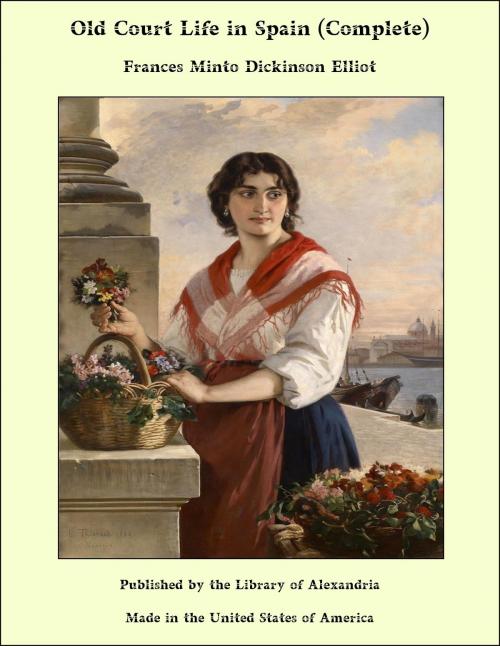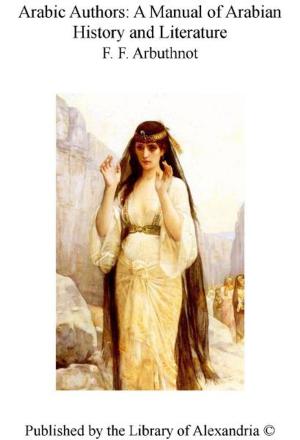Old Court Life in Spain (Complete)
Nonfiction, Religion & Spirituality, New Age, History, Fiction & Literature| Author: | Frances Minto Elliot | ISBN: | 9781465604088 |
| Publisher: | Library of Alexandria | Publication: | March 8, 2015 |
| Imprint: | Language: | English |
| Author: | Frances Minto Elliot |
| ISBN: | 9781465604088 |
| Publisher: | Library of Alexandria |
| Publication: | March 8, 2015 |
| Imprint: | |
| Language: | English |
The Romans next appeared, victorious under Pompey and Cæsar, spreading over Spain, but especially powerful at Seville, Cordoba, Toledo, Segovia, and Tarragona, where they have left their mark in mighty monuments. A race of uncivilised warriors followed from the North, so powerful that two Roman emperors perished in battle with them. Of the precise seat of the Gothic nation it is hard to speak with certainty. It is, however, known that they came from the extreme north, spreading to the borders of the Black Sea, into Asia Minor in the east, and to the south of Spain in the west. They are mentioned by Pliny, about sixty years before Christ, and later by Tacitus, who twice refers to them as “Gothones.” There were so many tribes, Visigoths, Astrogoths, Gepidæ, and even Vandals, that their story is as a tangled web, mixed with that of all nations, but it is clear that those who concern our present purpose came down into Spain from Narbonne and Toulouse. It is strange how soon these savage northmen discarded their wooden idols, Woden, Thor, and Balder, the gods of thunder and of the sun—so that when Constantine the Great christianised the world, the Gothic chief Wulfila was ready to become a convert. Who this Wulfila was, and how he came to be at Constantinople, is not clear. As Bishop of the Goths he returned to missionarise his countrymen, the Dacian tribes, in the mighty plains of Philippopolis (A.D. 310-314), and made a translation of the Bible into Gothic. Even in our own day something of this precious manuscript remains, beautifully written in letters of gold on purple vellum, at the Swedish University of Upsala. From the earliest times the Goths had a rude alphabet (Runes), which Wulfila increased, with letters closely resembling English, in his translation of the Scriptures. Rude indeed! The letters were formed by staves on wooden boards, but all the same were destined to become most ornamental. Gothic letters are still in use for decorative purposes. Numerous Gothic manuscripts exist, written in these picturesque characters, and the inscription over the portal of Pedro el Cruel at the Alcazar at Seville is in Gothic. To this day, too, in the Muzaraba Chapel, under the eastern tower of the Cathedral of Toledo, the service is celebrated according to the Christian rite from Gothic missals, dating from the time of King Recaredo.
The Romans next appeared, victorious under Pompey and Cæsar, spreading over Spain, but especially powerful at Seville, Cordoba, Toledo, Segovia, and Tarragona, where they have left their mark in mighty monuments. A race of uncivilised warriors followed from the North, so powerful that two Roman emperors perished in battle with them. Of the precise seat of the Gothic nation it is hard to speak with certainty. It is, however, known that they came from the extreme north, spreading to the borders of the Black Sea, into Asia Minor in the east, and to the south of Spain in the west. They are mentioned by Pliny, about sixty years before Christ, and later by Tacitus, who twice refers to them as “Gothones.” There were so many tribes, Visigoths, Astrogoths, Gepidæ, and even Vandals, that their story is as a tangled web, mixed with that of all nations, but it is clear that those who concern our present purpose came down into Spain from Narbonne and Toulouse. It is strange how soon these savage northmen discarded their wooden idols, Woden, Thor, and Balder, the gods of thunder and of the sun—so that when Constantine the Great christianised the world, the Gothic chief Wulfila was ready to become a convert. Who this Wulfila was, and how he came to be at Constantinople, is not clear. As Bishop of the Goths he returned to missionarise his countrymen, the Dacian tribes, in the mighty plains of Philippopolis (A.D. 310-314), and made a translation of the Bible into Gothic. Even in our own day something of this precious manuscript remains, beautifully written in letters of gold on purple vellum, at the Swedish University of Upsala. From the earliest times the Goths had a rude alphabet (Runes), which Wulfila increased, with letters closely resembling English, in his translation of the Scriptures. Rude indeed! The letters were formed by staves on wooden boards, but all the same were destined to become most ornamental. Gothic letters are still in use for decorative purposes. Numerous Gothic manuscripts exist, written in these picturesque characters, and the inscription over the portal of Pedro el Cruel at the Alcazar at Seville is in Gothic. To this day, too, in the Muzaraba Chapel, under the eastern tower of the Cathedral of Toledo, the service is celebrated according to the Christian rite from Gothic missals, dating from the time of King Recaredo.















